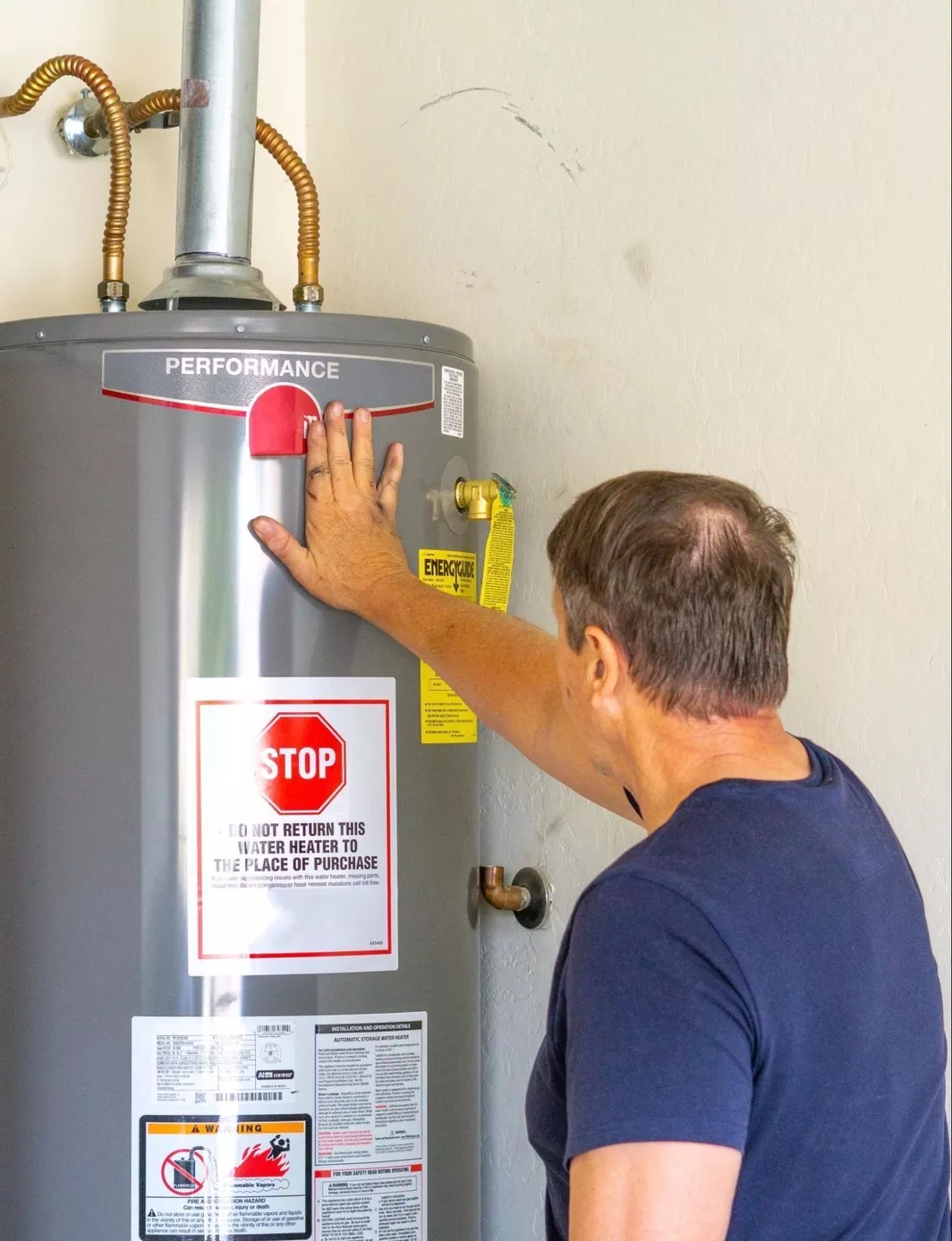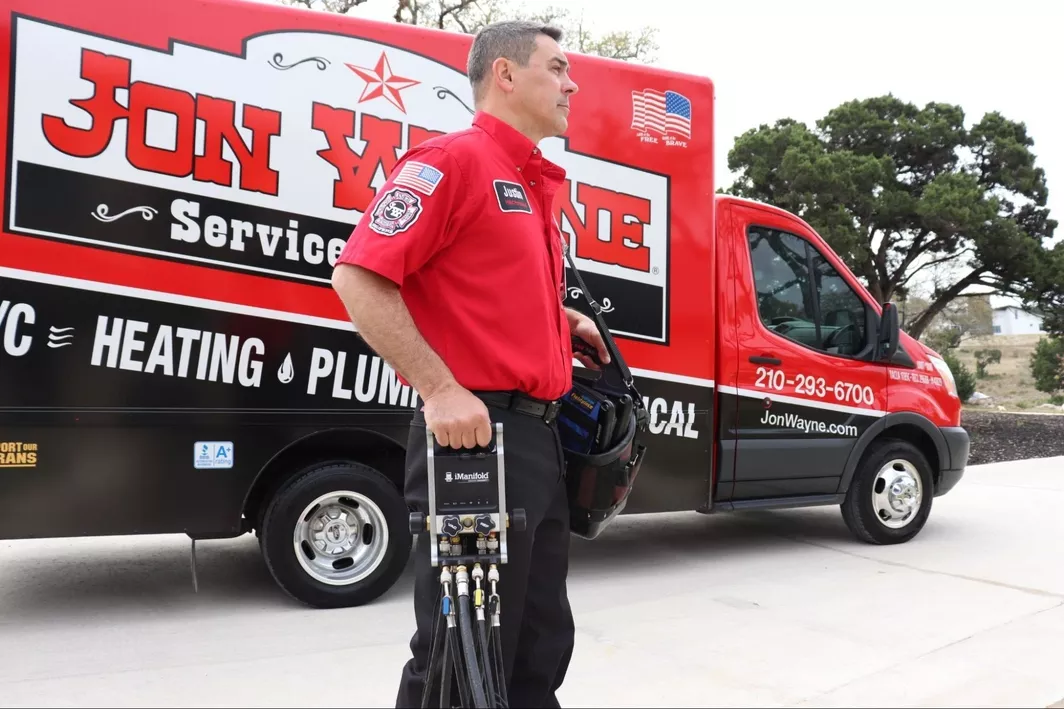How Do You Drain a Water Heater?

If you've noticed that your hot water isn't as hot as it used to be, or if you're hearing strange noises coming from the tank, it might be time to give your water heater a little TLC. Draining your water heater is like giving it a "mini-detox"; it removes the sediment and mineral build-up that can affect its performance over time.
You may think draining a water heater is a complex task best left to professionals, but you might be surprised that it's a doable DIY project for anyone willing to roll up their sleeves. Of course, if DIY isn’t your style, knowing what the process entails can also help you better understand what professionals are doing if you hire them.
In this blog, we'll walk you through the entire draining process, from the tools you'll need to safety precautions and step-by-step instructions. We’ll also touch on when it's best to call in the experts and what you can expect if you do.
Need help with your water heater?
If it's time for your annual water heater maintenance or you need repairs, call in the expert plumbers at Jon Wayne. With more than 200 trucks on the road, we'll get to you quickly and deliver the kind of high-quality service our namesake is known for.
Materials You Will Need
You don't need much in the way of special equipment to drain a water heater. All you need is a garden hose of the right length and a bucket. The hose connects to the drain valve, and you can use it to carry water to a utility sink or even outside. As the tank gets near empty, you'll need to switch to a bucket since the water pressure won't be high enough to move the water up, fighting the effects of gravity.
When looking at how to drain a water heater, the most important things you need to know are where the power shutoff is for the water heater and how to turn off the water flowing into the tank.
Steps for Draining a Water Heater
Draining a water heater is fairly straightforward. When learning how to drain an electric water heater, the process is identical to the one you use for a gas-powered unit. (The only water heaters that work differently are tankless systems, which don't need draining as part of their maintenance). Below are step-by-step instructions to guide you through the process.
Step 1: Turn off the water.
You don't need to shut off the water to your entire house, but you do need to ensure no water is flowing into the tank as you drain it. There should be a shutoff valve leading directly to your water heater. If you're not sure which valve is the right one, a little trial and error can put you on the right track.
Step 2: Turn off the power.
Both gas and electric water heaters often have electric parts, so it's a good idea to turn off the electricity for both types. With a gas heater, you'll also want to follow directions for diverting gas flow. Some water heaters let you set the unit to the pilot setting, while others recommend using the gas shutoff.
Step 3: Wait for things to cool down.
Water in your heater is often scalding hot, so you must wait at least a few hours, preferably overnight, to continue.
Step 4: Attach your hose to the drain valve.
Run the hose to a floor drain if one is available, or outside if your hose is long enough. If not, you'll run it to a nearby sink and switch to buckets for the last few gallons.
Step 5: Turn on the hot water at the sink.
Running the hot water helps drain the tank faster and equalizes the pressure as you're draining the tank.
Step 6: Open up the drain valve.
It takes a while for the tank to fully drain, so be prepared for a bit of a wait.
Step 7: Flush the tank with fresh water.
Turning the water back on lets fresh water wash away any built-up sediment. Let the tank empty several gallons before closing the drain valve and turning the power back on.
Benefits of Hiring a Professional Plumber
While it may be tempting to handle plumbing issues on your own, especially with the plethora of DIY videos and guides available, there are undeniable advantages to bringing in a certified professional.
Expertise and Training
Professional plumbers undergo rigorous training and certification processes, ensuring they know about various plumbing issues. They can identify problems quickly and offer effective solutions, saving you time and, possibly, future repair costs.
Quality of Work
A licensed plumber will provide a higher standard of work, adhering to local building codes and ensuring that the job is done safely and effectively. This means peace of mind for you, knowing the job is done right the first time.
Comprehensive Service
Professional plumbers can assess your entire plumbing system while attending to a specific issue, like draining your water heater. They can identify other potential problems that might be missed by an untrained eye, preventing small issues from becoming big, expensive ones down the line.
Proper Tools and Equipment
Professional plumbers come equipped with the latest tools and technology for various plumbing tasks. This ensures that the job is completed more efficiently and accurately than makeshift DIY efforts.
Warranty and Follow-Up
Many professional plumbing services offer warranties on their work, meaning if an issue recurs, you're covered for additional repairs at no extra cost. The availability of follow-up service is another benefit that can save you both money and hassle in the long run.
By hiring a professional plumber, you're not just paying for a service but investing in the long-term efficiency and reliability of your home's plumbing system. So, the next time you need to drain your water heater or tackle another plumbing issue, consider the peace of mind and quality of work a professional can offer.
Ready to schedule your annual tank flush?

Call Jon Wayne today for fast and convenient water heater repairs and maintenance. Our service is always backed by a 100% customer satisfaction guarantee, and we’ve got thousands of 5-star reviews to prove it!

